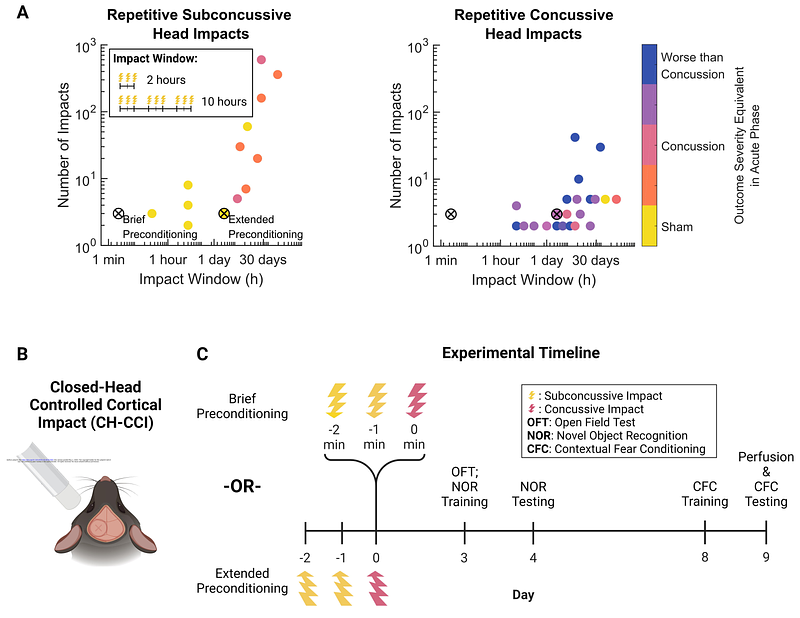Subconcussive preconditioning prevents microglial morphology changes and improves cognitive outcomes in mice

Subconcussive preconditioning prevents microglial morphology changes and improves cognitive outcomes in mice
Anderson, E. D.; Kim, K.; Georges, A. P.; Naveen, A.; Grajales, E.; Augustin, D. V.; Meaney, D. F.
AbstractSubconcussive impacts are highly prevalent in contact sports and are thought to increase concussion risk. However, the specific conditions under which these subconcussive impacts influence concussion outcomes are uncertain, limiting our understanding of the mechanisms behind repetitive head trauma. Given that subconcussive impacts elicit a microglial response, and microglial morphology offers insight into function, we examined how subconcussive preconditioning affects microglial morphology and cognitive outcome after concussion. To investigate this question, we developed and validated a scalable, closed-head controlled cortical impact model. Using this approach, we found that although concussion elicited features of hypersurveillant microglia at 1 day post-injury, they resolve by 9 days post-injury, and subconcussive impacts only produced microglial changes at 9 days post-injury. When subconcussive impacts preceded a concussive impact (i.e., preconditioned concussion) no changes in microglial morphology appeared at either 1 or 9 days after injury. Interestingly, subconcussive preconditioning eliminated concussion-associated cognitive deficits in novel object recognition and this cognitive protection was time dependent: preconditioning impacts were only protective if delivered within 2 minutes of concussion, and had no effect if delivered over a 48-hour window. These results suggest that some types of subconcussive impacts may offer protection against subsequent concussion and mitigate changes in microglial morphology. Understanding this timing window could inform strategies for minimizing cognitive impairments in athletes exposed to repetitive head trauma.